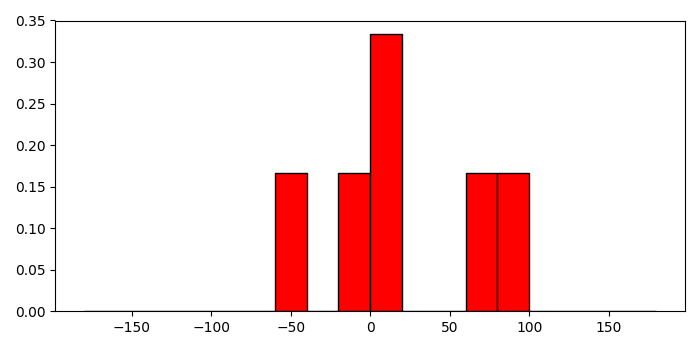
 Data Structure
Data Structure Networking
Networking RDBMS
RDBMS Operating System
Operating System Java
Java MS Excel
MS Excel iOS
iOS HTML
HTML CSS
CSS Android
Android Python
Python C Programming
C Programming C++
C++ C#
C# MongoDB
MongoDB MySQL
MySQL Javascript
Javascript PHP
PHP
- Selected Reading
- UPSC IAS Exams Notes
- Developer's Best Practices
- Questions and Answers
- Effective Resume Writing
- HR Interview Questions
- Computer Glossary
- Who is Who
Setting Relative Frequency in a Matplotlib Histogram
To set a relative frequency in a matplotlib histogram, we can take the following steps −
Create a list of numbers for data and bins.
Compute the histogram of a set of data, using histogram() method.
Get the hist and edges from the histogram.
Find the frequency of the histogram.
Make a bar with bins (step 1) and freq data (step 4).
To display the figure, use show() method.
Example
import numpy as np from matplotlib import pyplot as plt plt.rcParams["figure.figsize"] = [7.00, 3.50] plt.rcParams["figure.autolayout"] = True a = [-0.125, .15, 8.75, 72.5, -44.245, 88.45] bins = np.arange(-180, 181, 20) hist, edges = np.histogram(a, bins) freq = hist/float(hist.sum()) plt.bar(bins[:-1], freq, width=20, align="edge", ec="k", color='red') plt.show()
Output


Advertisements
